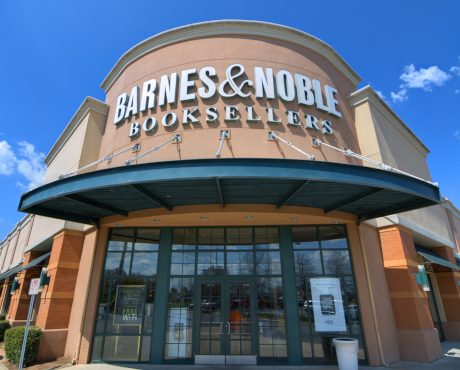A Beaten-Down, High-Yield Stock
In today’s stock market, there is usually a trade-off between income and growth. That is, if a company offers an oversized income stream through an ultra-high dividend yield, chances are it’s not in the best position to grow its business.
The reason is simple: If a high-yield stock also has strong growth potential, investors would rush to buy it, bidding up its price and lowering the yield.
So when you see Barnes & Noble, Inc. (NYSE:BKS) offering a jaw-dropping yield north of 10%, you know that it’s probably not running the fastest-growing business.
And indeed, as the largest retail bookseller in the U.S., Barnes & Noble hasn’t been in the best of shape. Part of the decline in its business was due to the rise of the e-commerce industry. In case you didn’t know, Amazon.com, Inc. (NASDAQ:AMZN)—the second U.S. company to reach $1.0 trillion in valuation—started out as an online bookseller.
The blunt reality is, consumers today can purchase almost everything they need online, including millions of books. As a result, investors have been concerned about the performance of this brick-and-mortar bookseller. Over the past 12 months, a period of surging share prices for the U.S. stock market, Barnes & Noble stock tumbled 23%. Ouch!
However, thanks to the inverse relationship between dividend yield and stock price, the downturn in BKS stock has brought its yield to a very attractive level. With a quarterly dividend rate of $0.15 per share, the company has an annual dividend yield of 10.9%.
Barnes & Noble, Inc.: Declining Financials
Of course, given Barnes & Noble, Inc.’s declining business, the dividend is not exactly carved in stone.
Barnes & Noble reported earnings earlier this month. It showed that in the first quarter of the company’s fiscal year 2018, which ended July 28, total sales declined 6.9% year-over-year to $795.0 million. Comparable store sales, a critical measure of a retailer’s performance, were down 6.1%. (Source: “Barnes & Noble Reports Fiscal 2019 First Quarter Financial Results,” Barnes & Noble, Inc., September 6, 2018.)
The only cheerful part in comp sales was that the drop was getting smaller in each month of the quarter, declining 7.8%, 6.1%, and 4.5%. In August, comp sales were just 0.8% lower than in the same month last year.
Bottom-line results weren’t that great, either. On a consolidated basis, Barnes & Noble had a net loss of $17.0 million, or $0.23 per share in the first fiscal quarter. In the year-ago period, it had a net loss of $10.8 million, or $0.15 per share.
“We fully realize that cutting expenses does not alone provide a path to the long term viability of any retail business,” said Barnes & Noble, Inc. Chairman Leonard Riggio in the earnings press release.
“Therefore, our short and long term focus is to grow our top line, and, by doing so, provide us the cash flow needed to grow our business.” (Source: Ibid.)
Why You Should Take a Look at a Double-Digit Yielder
Now, I know what you are thinking. If the dividend does not look sustainable under the current business conditions, why am I talking about this ultra-high yielder?
Well, the answer lies in the company’s potential as a takeover target.
In July, an investment fund led by activist investor Richard Schottenfeld acquired 5.7% of the company. Then, on September 7, 2018, Schottenfeld disclosed that his fund’s stake in Barnes & Noble, Inc. had increased to 6.9%, making the fund the fourth-largest shareholder of the company. (Source: “Barnes & Noble shares soar after investor discusses sale with founder,” Reuters, September 7, 2018.)
In particular, Schottenfeld said that he had a discussion with Barnes & Noble’s Chairman and founder about the possibility of selling the company.
Now, keep in mind that while business hasn’t been going that great, Barnes & Noble is still the nation’s largest retail bookseller with 629 stores located across 50 states.
Due to the lackluster performance of BKS stock, the company’s market capitalization has dropped to just over $400.0 million. If it does get bought out, the takeover price could command a sizable premium over today’s $5.50 apiece.
That’s why even though Barnes & Noble doesn’t look like a solid income play, it is one of the few ultra-high yielders that could provide investors with some serious capital gain potential down the road.
